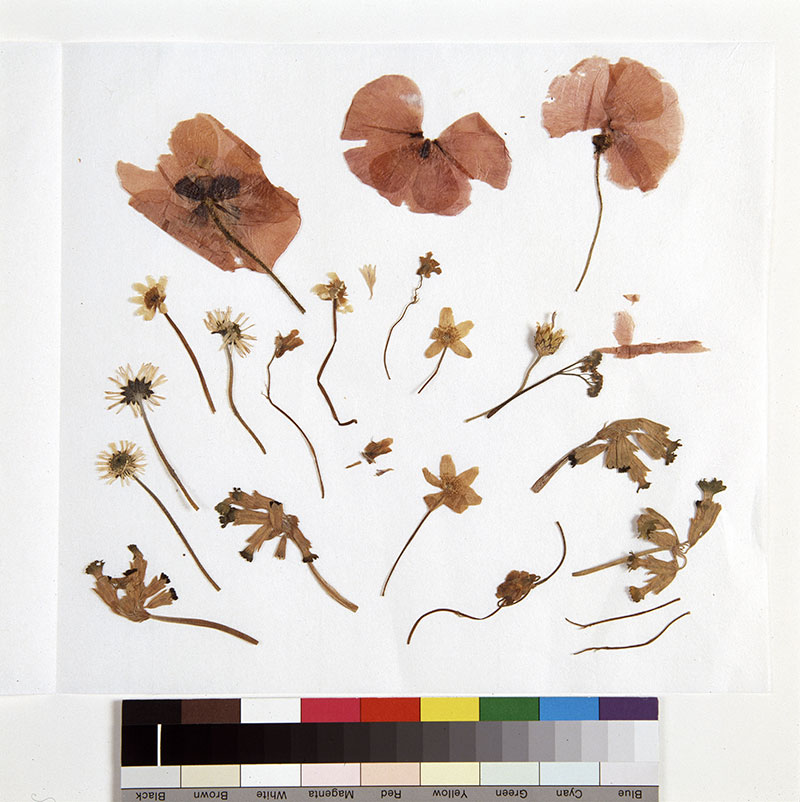One hundred years ago a twenty five year old Australian would pick a poppy on the fields of France that survives to this day.
Ray Jones, a private signaler in the 19th battalion was like thousands of other young men, drawn to World War One through a sense of adventure and when he picked this poppy his personal journey through the battlefields of Gallipoli, Egypt and France was just commencing.
Jones was a prolific correspondent and hoarder. He collected shrapnel from gun blasts and kept them in cigarette boxes. Concert programmes from Paris resonate both of the time and of the sanctuary from battle these moments gave. Meticulous ordering of paybooks and diligent numbering of copious letters home echo a man in charge of his affairs, while a champagne cork popped the moment the war ended explodes an image of joy a hundred years ago.
- Transcript
(Dr Vincent Alessi) When you read some of the old diaries from people who were on the war front and we were looking up one of the diaries and rare books and, you know, the entry was at like 4am when the servicemen had just been notified by their British generals to evacuate Gallipoli.
And this absolute sense of - I think the word "relief" is even in the diary - that finally that, you know, this God forsaken mistake was finally over. I think those stories are known, people talk about those things, but I think the reason there isn't a great focus on those things is because we… the Anzac narrative now is about… the toughness of the Australian soldiers and the bravery of the Australian soldiers and mateship and that… their friends were being killed but they would get up and… jump over the trenches anyway. Which did happen - we're not dismissing the fact that it didn't happen - but that has come to the fore because it paints Australia in a certain way and people don't want to hear all the story of "thank God it’s over". It doesn't… it's almost like in a way – it’s not cowardly - but it can be interrupted that way.
So we’re not making a judgment either way but I think it is just important to have that aspect there - that these were young 18, 19 year old men who, a lot of them went for a bit of an adventure until they got there and they realised that it wasn't an adventure. So that human experience, I think, is really important to us.
“You can still see the red in the poppy,” an excited Katie Wood points out. Wood, an archivist with the University of Melbourne Archives for seven years is wading through a deep mix of World War One archives held at the University.
Inspired by the poem ‘In Flanders Fields’ the remembrance poppy has been used since 1921 as a symbol to commemorate those who died in war. Its place as a symbol has in recent years become ubiquitous and its use has been labelled ‘poppy fascism’ by some who feel it has been used to glorify war.
Narratives around conflict are historically contentious and a unique exhibition focusing on the human experience of conflict at the Ian Potter Museum of Art, will challenge the existing narrative around both ANZAC day and conflict in general.

“We spent glorious hours leafing through the University of Melbourne Archive,” outlines a busy Vincent Alessi from this office. Dr. Alessi, curatorial manager with the Potter is working with the vision of renowned conceptually driven artist Brook Andrew for an exhibition entitled ‘Sanctuary: Tombs of the Outcasts.’
The exhibition seeks to give voice to aspects of history, which have become silent and reveals Australia as place of sanctuary. Through the use of visual, written and audio objects the exhibition will address the key issues of silent stories such as that of Indigenous servicemen and women, fighters of all nationalities in multiple conflicts and will seek to underline the futility of war.
“The human experience of conflict has been lost in the past one hundred years and we want to challenge the existing narrative around both ANZAC day and conflict in general,” Alessi underscores.
The Potter is on a journey to uncover these silent stories and this exhibition dovetailing with a series of essays from their catalogue and a public lecture with Professor Marcia Langton and Brook Andrew aims to further unpack lost stories that they hope like the poppy Ray Jones plucked will endure for over a hundred years.
Brook Andrew. Sanctuary: Tombs of the Outcasts opens to the public on 18 April. Indigenous Anzacs a public lecture by Professor Marcia Langton, Brook Alexander facilitated by Maxine McKew will occur on 28 May at the University of Melbourne.
Read next: Mourning a lost generation